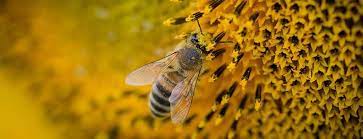Our Blog
Home / Blog
Elephants And Bees: How Tiny Social Insects Are Helping People Protect Their Crops From Hungry Giants

In the intricate dance of coexistence between humans and wildlife, there emerges an unexpected alliance between two seemingly unrelated species: elephants and bees. This unique synergy, born out of necessity and ingenuity, is paving the way for sustainable and harmonious agriculture.
The Dilemma: Elephants and Crop Raiding
In many regions where human settlements border wildlife habitats, conflicts often arise over resources. Elephants, being voracious eaters, sometimes venture into farmlands, causing damage to crops. This age-old challenge has prompted farmers to explore unconventional methods to protect their livelihoods without causing harm to these magnificent creatures.
Enter the Beehive Fences: A Natural Deterrent
The answer lies in the wisdom of nature. Researchers and farmers have discovered that elephants have an innate aversion to bees. To capitalize on this, innovative beehive fences have been deployed as a natural deterrent. Suspended at intervals around crop perimeters, these fences not only protect fields but also provide additional benefits.
How It Works: The Science Behind the Buzz
When an elephant disturbs the beehive fence, the bees within respond swiftly, creating a buzzing commotion. Elephants, with their sensitive trunks and ears, find this sound and the threat of a bee sting highly uncomfortable. The fear of getting stung by agitated bees serves as an effective deterrent, redirecting the elephants away from the crops.
Win-Win for Farmers and Elephants
The implementation of beehive fences has proven to be a win-win solution. Farmers safeguard their crops from marauding elephants, reducing human-wildlife conflicts. Simultaneously, elephants avoid potentially harmful encounters with humans, fostering a more peaceful coexistence.
Beyond Crop Protection: The Ecological Impact
The ripple effects of this innovative approach extend beyond crop protection. Beehive fences contribute to the conservation of bee populations, essential pollinators for various plants. As bees thrive, so does the overall biodiversity of the region, creating a delicate ecological balance.
Community-Led Conservation: A Model for the Future
This collaborative effort between communities, researchers, and conservationists exemplifies the power of community-led conservation. By embracing the inherent connection between species and utilizing nature’s cues, we forge a path toward sustainable agriculture that respects the intricate web of life.
Conclusion: Buzzing Toward a Harmonious Future
The tale of elephants and bees serves as a testament to the potential for innovative, nature-inspired solutions to mitigate human-wildlife conflicts. As we navigate the challenges of coexistence, let the harmonious hum of bees guide us toward a future where the giants of the wild and the industrious buzz of tiny insects coexist in harmony, creating a tapestry of sustainability for generations to come.





